What Can Seniors Eat Besides Bland Food? 9 Must-Try Recipes That Are Packed with Flavor and Fight Aging
Are you a senior who hates bland food? Stop reaching for the salt shaker! Your shrinking taste buds and the wrong medications are sabotaging your health, increasing your risk of frailty and heart disease.
But what if 9 incredible, anti-aging meals could revolutionize your kitchen? Inside, we expose the flavor crisis of aging and give you the simple, actionable recipes that fight muscle loss, boost your brain, and make every bite exciting again.
This is the simple guide to defeat bland food and reclaim your quality of life today.
Flavor-Hacking Sheet
🍄 Salty/Savory Deepness
Boost with Umami: Add sautéed mushrooms, nutritional yeast, or no-salt tomato paste.
How: Umami deepens flavor, tricking the palate into sensing richness without sodium.
🍋 Brightness/Tang
Finish with Acids: Squeeze fresh lemon/lime juice or add a dash of balsamic vinegar after cooking.
How: Acidity enhances existing flavors and mimics the sensation of saltiness.
🌿 Aromatic Power
Maximize Aromatics: Use fresh herbs, garlic, ginger, and robust spices (like curry or smoked paprika).
How: Strong smells provide sensory stimulation lost with age.
🔥 Sweetness/Depth
Roast It: Grill or roast vegetables (carrots, peppers, onions) until slightly charred.
How: High heat caramelizes natural sugars, adding flavor without refined sugars.
🍠 Circulatory Support
Balance with Potassium: Regularly eat high-potassium foods like beans, spinach, and sweet potatoes.
How: Potassium naturally counters the effects of sodium on blood pressure.
The Flavor Crisis in Aging: Why Food Tastes Bland

The experience of finding favorite foods increasingly bland is a common concern among older adults. This sensory shift is not subjective but stems from physiological changes inherent to the aging process.
Understanding these changes is the first step toward reclaiming culinary enjoyment and ensuring optimal nutrition.
The Science Behind Lost Taste and Appetite

The tongue typically houses about 10,000 taste buds, but these specialized cells begin to shrink and decline in number as individuals age. This reduction means that foods must contain more intense flavor compounds to register fully on the palate.
Furthermore, age-related nerve degeneration may affect the sensitivity of the remaining taste receptors, compounding the issue of diminished flavor perception.
This natural decline is often exacerbated by secondary factors, particularly a reduction in saliva production, leading to a drier mouth over time. Saliva is critical for dissolving food compounds so that they can reach the taste buds; therefore, a drier mouth further impairs the ability to taste food accurately.
It is also noted that regional taste deficits, where flavor is lost in specific areas of the tongue, are highly prevalent in older populations, even if the person is unaware of the localized loss.
A compounding risk factor that often goes unaddressed is the role of common medications. Many drugs used to manage chronic conditions, such as antibiotics, cholesterol, or blood pressure medicines, can alter how food tastes or cause dry mouth, which directly impacts palatability.
Because older adults frequently rely on multiple prescriptions, these side effects can inadvertently contribute significantly to the perceived blandness of their diet. Therefore, any major dietary change should always be discussed with a primary care provider to ensure medication effects are considered.
The Hidden Health Risk of Blandness

When food loses its appeal, there is a serious underlying health implication that extends beyond simple enjoyment. If meals cease to satisfy, older individuals often resort to improving the flavor by adding excessive amounts of salt or sugar.
The average American already consumes significantly more sodium (around 3,400 mg daily) than the recommended limit of 2,300 mg per day.
Excessive sodium intake carries a substantial health risk, contributing to conditions like high blood pressure, cardiovascular disease, and stroke.
For seniors, this attempt to restore flavor through the salt shaker is dangerous, potentially increasing their risk of chronic disease and high blood pressure, which may decrease by as much as 25% if intake is limited to 1,300 mg per day.
The vast majority of dietary sodium comes from processed and restaurant foods, making home cooking with low-sodium flavor hacks a vital health strategy.
In addition to the dangers of high sodium, the decline in appetite caused by bland food significantly increases the risk of malnutrition and frailty.
If meals are unappealing, nutrient intake falls, leading to deficiencies in essential vitamins and minerals.
Flavor enhancement, therefore, transitions from a culinary preference to a necessary nutritional intervention strategy to ensure adequate caloric and nutrient consumption, helping to prevent physical decline and loss of independence.
The Solution: Nutrient-Dense Flavor Hacking
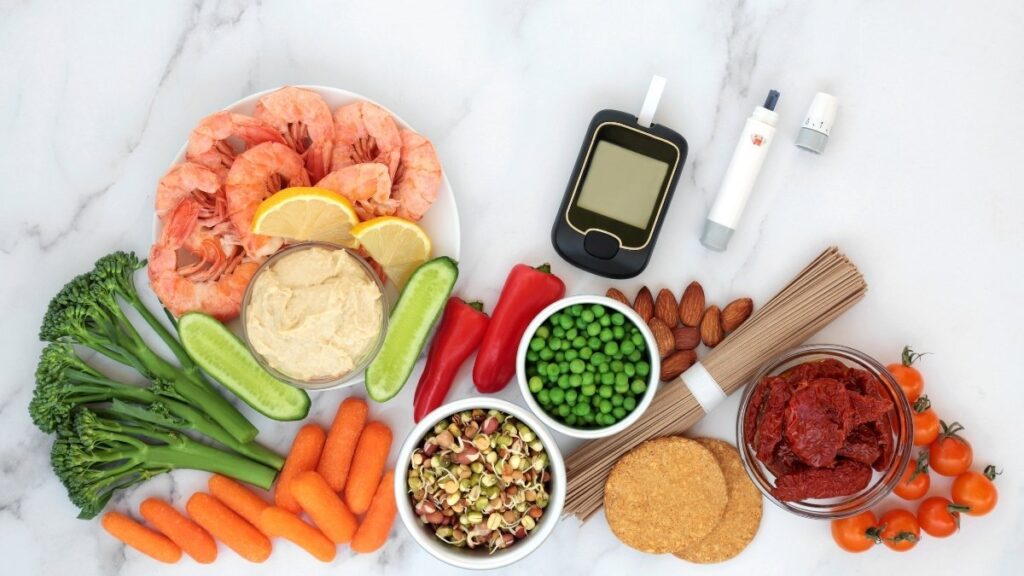
Given the reality that energy needs generally decrease with age due to shifts in metabolism and activity levels, older adults must prioritize nutrient-dense foods.
These foods deliver high concentrations of vitamins, minerals, and fiber per calorie, ensuring the body receives essential building blocks without unnecessary energy intake.
Nutrient-dense flavor hacking involves substituting high-calorie, low-nutrient flavor additives, like excess salt and sugar, with nutrient-rich ingredients.
Strategies such as using herbs, spices, umami boosters, and acids can dramatically improve flavor saturation while lowering the intake of sodium and saturated fats. This strategy ensures that every consumed calorie contributes maximum benefit to healthy aging and longevity.
Anti-Aging Nutritional Pillars (The Evidence Base)
For any recipe to be considered “anti-aging,” it must strategically address specific nutritional requirements that change with advanced age.
The focus shifts to protecting muscle mass, supporting digestion, and mitigating common micronutrient deficiencies.
Prioritizing Protein for Muscle Health (Sarcopenia Defense)
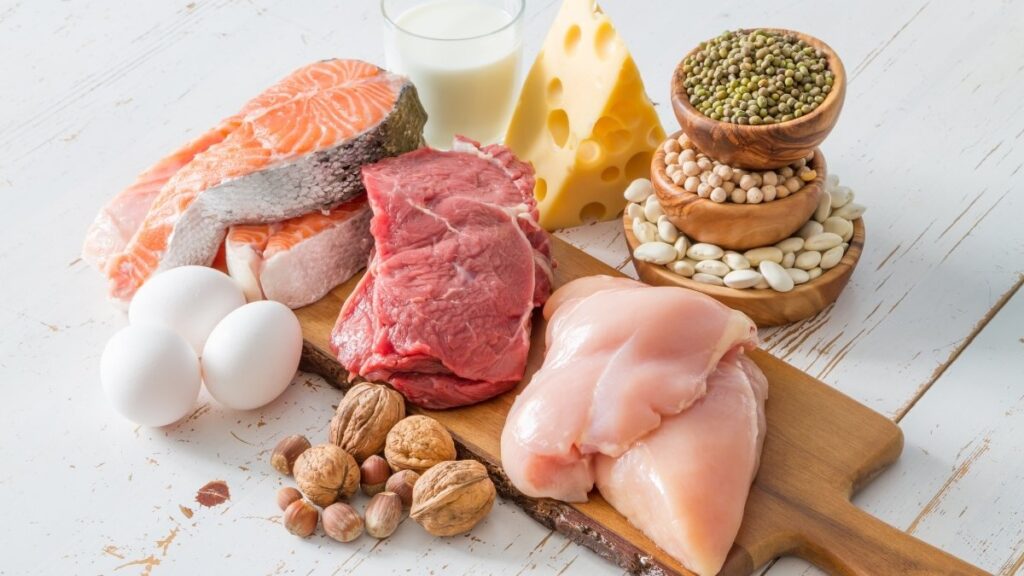
The preservation of muscle mass is arguably the most crucial anti-aging nutritional goal for older adults, acting as a primary defense against frailty and falls. Muscle loss, known as sarcopenia, accelerates with age and directly impacts physical function and independence.
Due to decreased efficiency in protein digestion and absorption in the aging body, current evidence suggests that the Recommended Dietary Allowance (RDA) of 0.8 grams per kilogram of body weight is insufficient for maximizing physical health in seniors.
International expert panels recommend a significantly higher intake of 1.0 to 1.2 grams of protein per kilogram of body weight daily for healthy older adults.
For effective muscle protein synthesis, the body requires a high concentration of protein at each meal, ideally aiming for 25 to 30 grams of high-quality protein per main eating occasion.
This optimized protein intake is most effective when paired with daily physical activity, particularly resistance exercise.
While diet provides the necessary building blocks, mechanical stimulation from exercise signals the muscle fibers to utilize the protein for maintenance and growth. Recipes that deliver these high protein goals efficiently are essential tools for promoting longevity and sustained physical function.
Fiber for Gut and Heart Longevity

Dietary fiber is an under-consumed nutrient in the general population and is especially vital for the healthspan of older adults. The recommended daily fiber intake for those aged 60 and older is 30 grams for men and 21 grams for women.
Fiber intake beyond these recommendations helps promote regular bowel movements and can reduce the risk of common issues like hemorrhoids and diverticulitis.
Beyond digestive regularity, fiber acts as a prebiotic, serving as critical fuel for the beneficial bacteria residing in the gut. When gut bacteria metabolize fiber, they produce beneficial compounds called postbiotics, specifically Short-Chain Fatty Acids (SCFAs).
SCFAs are paramount in reducing systemic inflammation, supporting the intestinal lining, and strengthening overall immunity, linking fiber intake directly to lower rates of heart disease, stroke, and type 2 diabetes.
Essential Micronutrients for Bone, Brain, and Energy
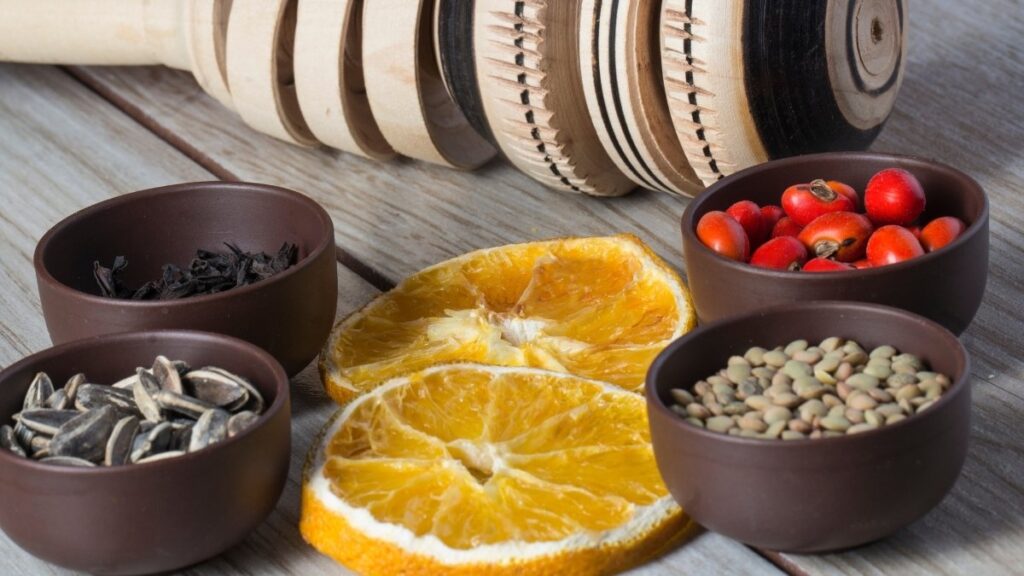
Because older adults require more nutrients per calorie, focusing on specific micronutrients common to age-related decline is paramount. Magnesium, Vitamin D, and Omega-3 fatty acids are critical nutritional targets that must be intentionally incorporated into flavorful recipes.
Magnesium is essential for over 300 enzyme reactions in the body, playing roles in regulating blood sugar, maintaining strong muscles, and contributing to heart health.
Given that the average diet often contains far less than the recommended daily amounts (310–420mg), low magnesium levels can increase the risk of metabolic syndrome, widespread muscle pain, and dementia.
Magnesium-rich foods like nuts, seeds, whole grains, and dark chocolate are excellent ways to address this deficiency.
Vitamin D, often called the “sunshine vitamin,” is crucial for calcium absorption, bone health, and immune function, with the daily recommended amount increasing slightly to 20 micrograms (mcg) for those aged 71 and older.
Vitamin D deficiency can impair functional outcomes and bone strength, increasing fall risk. Recent meta-analyses indicate that adequate Vitamin D status may also be associated with a significant 16% reduction in cancer mortality, highlighting its broad anti-aging importance.
Omega-3 fatty acids, particularly EPA and DHA found in fatty fish like salmon, are essential fats the body cannot make on its own. These fats are critical for building healthy cell membranes and supporting anti-inflammatory hormone production.
They are strongly linked to preventing heart disease, reducing chronic inflammation (which benefits conditions like rheumatoid arthritis), and supporting long-term cognitive health. Dietary sources, such as eating fatty fish twice a week, are the recommended priority for intake.
Flavor Mastery: Low-Sodium Techniques for Senior Cooking
The key to creating palatable, anti-aging recipes lies in mastering flavor sources that do not rely on sodium or excessive sugar.
By incorporating umami, acids, and aromatics, chefs and caregivers can stimulate the remaining taste receptors and elevate meal satisfaction.
The Umami Advantage
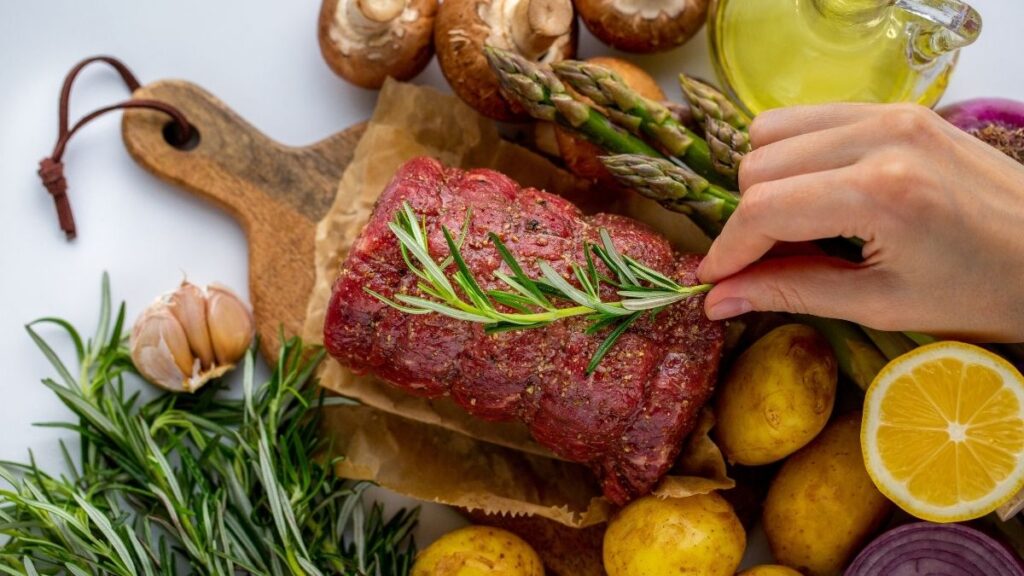
Umami, often described as savory or meaty, is a flavor profile that provides deep satisfaction and can effectively substitute for the richness normally associated with salt.
Ingredients naturally rich in umami, such as sautéed mushrooms, nutritional yeast, and no-salt-added tomato paste, can transform the flavor profile of soups, sauces, and stews.
The addition of these umami ingredients, especially alongside herbs and spices, has been scientifically shown to enhance the perceived saltiness of sodium-reduced meals to levels comparable to full-salt versions.
This means that the palate is “tricked” into sensing richness and saltiness through concentrated, savory aromas and depth, successfully mitigating the craving for added salt. Furthermore, powerful aromatics like garlic not only enhance flavor acceptability but also offer additional antioxidant and anti-inflammatory benefits.
Brightening with Acids and Aromatics

Acids provide a necessary “brightening” effect to food, countering the dullness that aging palates often perceive.
A simple squeeze of fresh lemon or lime juice, or a dash of vinegar such as balsamic or apple cider, acts as a dynamic flavor boost, particularly effective on lean proteins and vegetables.
Alongside acids, fresh herbs (like basil, dill, or cilantro) and robust aromatics (garlic, onion, ginger) form the flavorful foundation of countless healthy dishes.
Using a variety of these ingredients provides complex sensory stimulation, ensuring the meal is aromatic and highly palatable, rather than being flat.
Using flavorful liquids, such as low-sodium broth, instead of plain water when cooking grains like rice or quinoa, infuses flavor at the core level.
The Power of Roasting and Searing

The cooking method itself is a powerful, salt-free way to enhance flavor. Techniques that employ high heat, such as roasting, grilling, braising, or searing, bring out the natural, intrinsic flavors within the food.
For instance, roasting vegetables causes the Maillard reaction and caramelization of natural sugars, yielding a deep, savory sweetness that eliminates the need for sugar or excessive salt.
By intensifying flavors through high-heat cooking, the resulting dish is inherently more robust and flavorful, leading to a greater satisfaction and reduced urge to add external seasonings.
The 9 Must-Try Anti-Aging Recipes
9 Power Ingredients
🐟 Omega-3s (EPA/DHA)
Cognitive function and reduced inflammation.
🍄 Dietary Fiber
Gut health and cardiovascular protection (21-30g target).
🥄 Leucine-Rich Protein
Sarcopenia prevention (1.0–1.2 g/kg goal).
🍓 Anthocyanins
Protects brain cells and promotes skin elasticity.
🍠 Beta-Carotene
Supports vision and immune system function.
🍆 Nasunin
Antioxidant protection against cognitive decline.
🍫 Magnesium
Critical for heart rhythm and muscle energy.
🍗 Lean Protein & B Vitamins
Muscle repair and energy metabolism.
🥬 Potassium & Fiber
Blood pressure regulation and digestion.
The following recipes are designed to maximize flavor using the low-sodium techniques described above while ensuring optimal delivery of anti-aging nutrients critical for seniors.
Recipe 1: Mediterranean Citrus-Glazed Salmon with Roasted Rosemary Veggies

This recipe employs the brightening power of acidic flavor enhancement, utilizing fresh lemon juice and zest alongside aromatic rosemary and thyme.
The citrus glaze cuts through the richness of the salmon and elevates the earthiness of the accompanying vegetables.
Roasting the side vegetables, such as asparagus or broccoli, caramelizes their natural sugars, imparting a subtle, non-processed sweetness that minimizes the need for table sugar.
Salmon is a premium, dense source of high-quality protein, which helps ensure the delivery of the 25 to 30 grams needed per meal to actively fight sarcopenia.
The fish is rich in anti-inflammatory Omega-3 fatty acids (EPA and DHA), essential for supporting cognitive function and reducing systemic inflammation linked to chronic disease.
Cold-water fish also naturally contributes Vitamin D, a nutrient critical for bone health and immune resilience that is often deficient in older adults.
Salmon is naturally soft and moist, making it easy to chew and digest, an important factor for seniors who may struggle with tougher meats.
For simplified preparation, the herb and citrus marinade can be mixed in advance and used to coat the fish just prior to cooking. Pairing the salmon with nutrient-dense sides like quinoa, cooked in low-sodium broth, further boosts the meal’s anti-aging profile.
Recipe 2: Spicy Umami-Rich Lentil & Mushroom Stew

This robust stew builds deep, savory flavor by leveraging the powerful umami compounds found in mushrooms and no-salt-added tomato paste. Intense aromatic layers are created by generously sautéing fresh garlic and grated ginger, coupled with bold spices such as cumin or mild chili powder.
Using unsalted vegetable broth for the base ensures that profound flavor is infused throughout the dish without the reliance on high-sodium liquids.
Lentils are an exceptional, budget-friendly source of plant-based protein, providing around 15 grams per cup, which contributes substantially to daily muscle maintenance goals.
This dish is also an excellent source of dietary fiber, necessary to meet the 21 to 30 gram daily target crucial for promoting gut health and reducing inflammation.
Lentils and other beans also contain high levels of Potassium, a mineral known to counteract the negative effects of sodium and support healthy blood pressure.
The stew format ensures that all ingredients are softened, making it highly suitable for seniors who may face difficulties with chewing or swallowing.
Rinsing canned beans prior to use is a simple, effective step that can wash away up to 40% of the added sodium. This meal is ideal for preparing in large batches, supporting consistent access to nutritious, fiber-rich food throughout the week.
Recipe 3: High-Protein Spiced Greek Yogurt Power Bowl
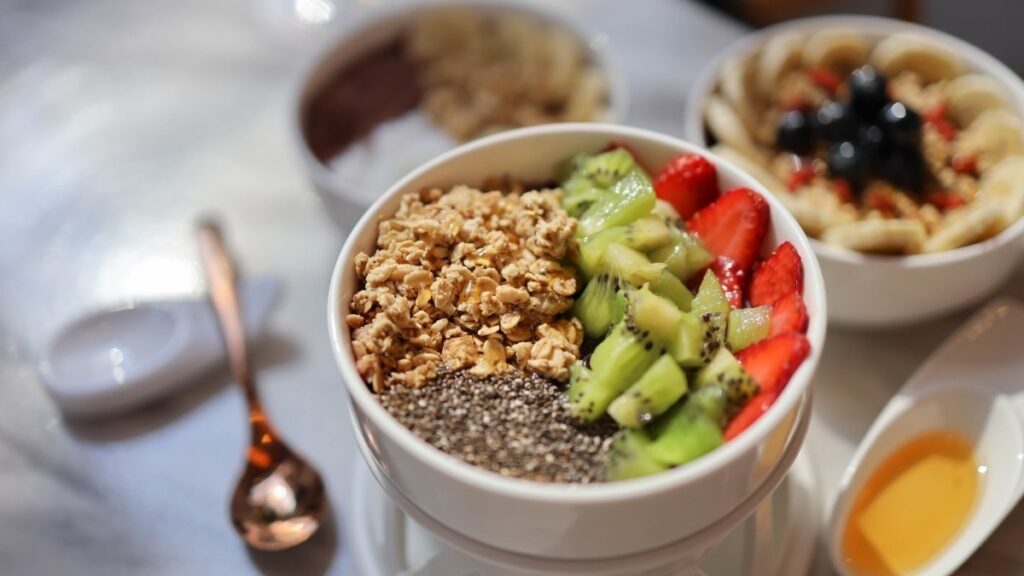
To transform plain Greek yogurt from bland to brilliant, it is enhanced with warming, aromatic spices like cinnamon and cardamom, balanced with a splash of pure vanilla extract.
The addition of lemon zest or a small amount of juice brightens the flavor profile, providing the sensory complexity that the aging palate often misses. This method successfully eliminates the need for excessive sugar found in many pre-flavored commercial yogurts, cutting down on “empty calories”.
Greek yogurt is one of the most efficient sources of easily digestible, high-quality dairy protein, delivering about 15 grams per serving to help meet the essential 25-30 gram meal target.
The protein is rich in leucine, a key essential amino acid that is critical for effectively initiating muscle protein synthesis in older adults. As a fortified dairy product, yogurt is also a vital source of Calcium and Vitamin D, which are necessary for maintaining strong bone density, particularly for women over 51.
This power bowl requires minimal preparation, making it an excellent choice for seniors with limited energy or mobility.
The smooth consistency is inherently easy to consume, but for those with severe chewing or swallowing issues, the ingredients can be blended into a thicker, nutrient-dense smoothie.
To maximize the anti-aging benefits, a topping of walnuts provides healthy Alpha-linolenic acid (ALA), a plant-based Omega-3 fat.
Recipe 4: Deep Red Berry & Walnut Overnight Oats

Overnight oats rely on the balanced, natural sweetness derived from complex whole grains and deep red berries, minimizing the need for added refined sugar.
The recipe utilizes aromatic ingredients like cinnamon and vanilla extract to introduce warming, satisfying notes that enhance palatability without requiring sodium.
The structural addition of chopped walnuts ensures satisfying textural contrast, which is key to maintaining enjoyment when taste perception is reduced.
The deep red and blue berries used, such as blueberries, are rich in powerful antioxidant compounds known as anthocyanins and polyphenols.
These compounds are scientifically linked to protecting brain cell membranes from oxidative stress, thereby supporting long-term cognitive health. Both the oats and the walnuts provide significant amounts of dietary fiber, promoting gut health and reducing systemic inflammation.
This preparation method is highly beneficial as the entire meal is prepared the night before, reducing the daily burden of cooking and promoting consistent consumption of a healthy, complex carbohydrate breakfast.
The soaking process yields a soft, non-chewy texture ideal for seniors with dental concerns or difficulty chewing. For enhanced muscle support, the oats can be fortified with high-protein milk or a scoop of tasteless protein powder before refrigeration.
Recipe 5: Curried Carrot and Sweet Potato Coconut Soup

This vibrant soup achieves deep flavor by first roasting the carrots and sweet potatoes, a technique that concentrates their natural sugars and intensifies their intrinsic flavor profiles.
A robust, high-acceptance spice blend, such as curry powder, provides an intense, complex aromatic experience that effectively compensates for any sodium reduction. Unsalted chicken or vegetable broth forms the base, which is enriched with full-fat coconut milk to provide a satisfyingly rich mouthfeel.
Carrots and sweet potatoes are exceptional sources of Beta-Carotene, a provitamin carotenoid that the body readily converts into Vitamin A, a vital nutrient for maintaining healthy vision and immune function.
A diet rich in carotenoids has been shown to reduce the risk of macular degeneration, a common age-related vision impairment, by a significant margin. Furthermore, these vegetables are excellent sources of Potassium, which helps to mitigate the impact of sodium on blood pressure.
The final smooth, pureed consistency of the soup makes it an optimal meal choice for individuals who experience difficulty swallowing, dry mouth, or chewing issues.
The combination of healthy fats from the coconut milk and concentrated nutrients ensures high nutrient density, combating low appetite in a small volume. For an additional protein boost, cooked white beans or collagen peptides can be blended directly into the finished soup.
Recipe 6: Smoky Nasunin-Rich Roasted Eggplant Dip (Low-Sodium Baba Ghanoush)
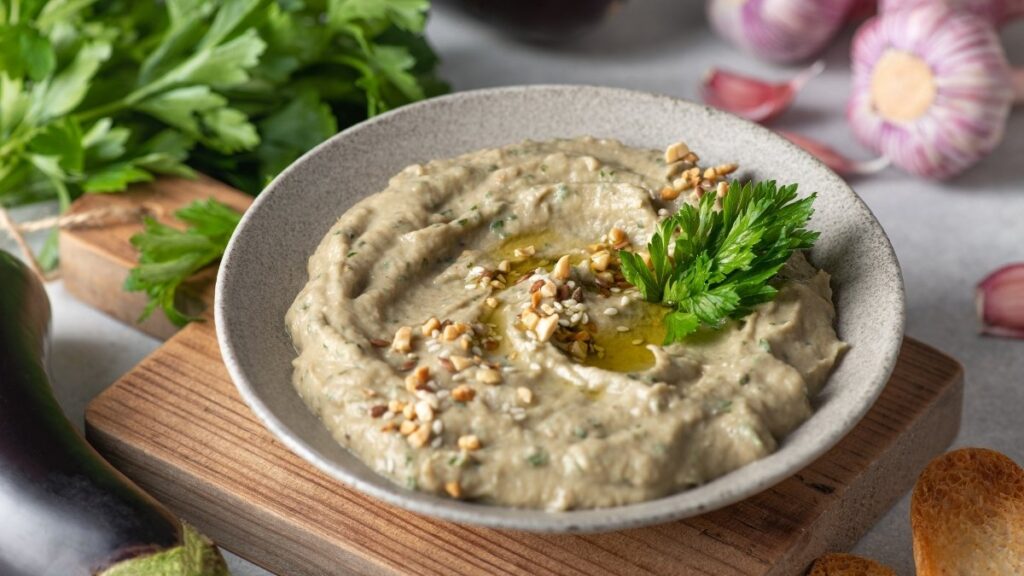
The critical flavor-building step in this dip is charring the eggplant skin until it is blackened and the flesh is smoky and extremely tender, which concentrates the natural umami flavors.
The resulting smokiness provides a deep savory note that effectively removes the need for excessive added salt. The dip is brightened by the necessary addition of fresh lemon juice, with intense flavor contributed by garlic.
Eggplant skins contain a potent antioxidant called Nasunin, which is classified as an anthocyanin and protects vital brain cell membranes from damage caused by free radicals.
This antioxidant action is theorized to help enhance memory and learning, providing neurological support for older adults and protecting against cognitive decline.
Consuming this eggplant dip as part of a varied, whole-food diet contributes significantly to the anti-inflammatory and cognitive health goals of the anti-aging regimen.
Because the final product is a smooth dip, the texture is easy to manage and highly suitable for those with limited chewing ability, especially when paired with soft pita bread or tender vegetable sticks.
Roasting the eggplant until it is fully tender is paramount to achieving both the desired smoky flavor and the smooth, palatable texture. As a nutritious, make-ahead snack, this dip ensures easy access to brain-boosting nutrients throughout the week.
Recipe 7: Magnesium-Boosting Dark Chocolate Avocado Mousse

This indulgent recipe achieves its rich flavor profile through the use of high-quality dark chocolate (70% cocoa or greater), prioritizing deep cocoa notes over simple sweetness.
Only a minimal amount of natural sweetener, such as honey or maple syrup, is required, supporting the goal of avoiding refined sugars and empty calories. A small addition of coffee powder or cayenne pepper can be used to further amplify the chocolate’s inherent complexity and provide satisfying sensory stimulation.
This mousse is an exceptional source of Magnesium, a mineral that is often under-consumed but is critical for healthy aging, muscle strength, and regulating blood sugar.
Given that low magnesium levels are associated with increased risks of exhaustion and metabolic syndrome, this dessert provides a concentrated, palatable dose of this vital nutrient.
Avocado, which provides the mousse’s creamy structure, contributes healthy monounsaturated fats that align with dietary patterns linked to reduced cognitive decline.
The mousse requires no cooking and is simple to prepare using only a blender, making it highly accessible for seniors with physical limitations.
The texture is inherently smooth, rich, and easy to manage, ensuring that this therapeutic, nutrient-dense treat is consumed completely, especially by those with diminished appetites.
Consuming healthy fats, such as those in avocado, also aids in the efficient absorption of fat-soluble vitamins found in other meals, maximizing the overall nutritional strategy.
Recipe 8: Heart-Healthy Herb-Crusted Chicken Breast
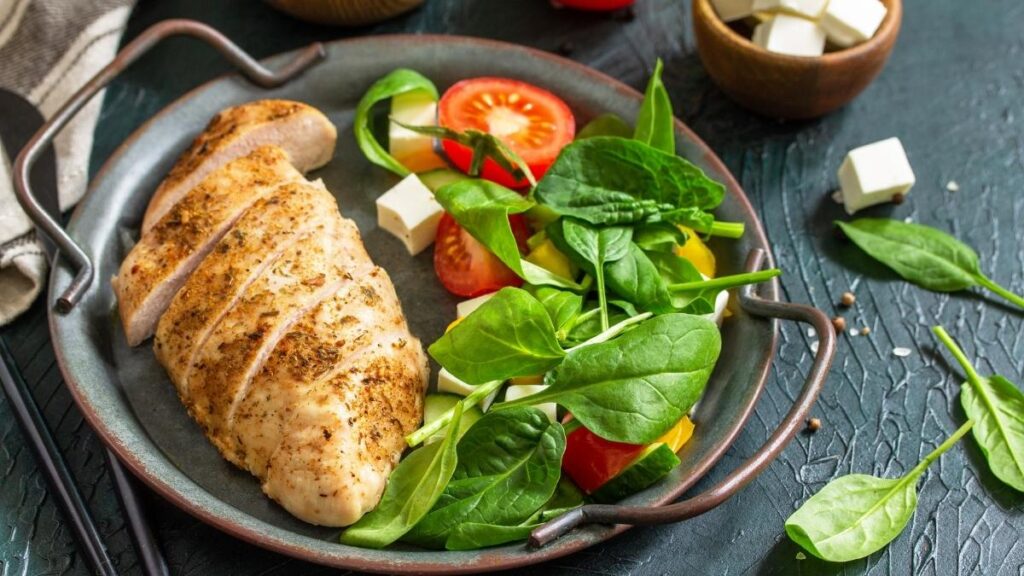
To maximize flavor without sodium, this recipe utilizes a dense, vibrant coating made from a blend of fresh herbs (e.g., parsley, basil, oregano) combined with garlic and a binding agent like low-sodium mustard.
The intense, complex flavor of the herb crust entirely replaces the perceived need for salt, ensuring high palatability for the aging consumer. Cooking the chicken via baking or air-frying yields a desirable crispy texture on the crust while maintaining a tender and moist interior.
Chicken breast serves as a lean, complete protein, providing a substantial amount of protein (over 30 grams per serving) necessary to meet the demanding daily muscle maintenance requirements of older adults.
High-quality protein intake is crucial for preserving physical function, maintaining mobility, and reducing the risk of sarcopenia. Furthermore, lean meats are excellent sources of B vitamins, such as Thiamine, which are essential micronutrients for energy metabolism and nervous system health.
For seniors with mild chewing difficulty, the cooked chicken should be sliced thinly or finely diced before serving to ensure comfortable consumption.
Marinating the chicken in the fresh herb mixture before cooking allows the intense aromatics to penetrate the meat, optimizing flavor throughout the protein source.
Serving this protein alongside high-potassium sides like white beans or sweet potatoes further enhances the overall heart-healthy benefits of the meal.
Recipe 9: White Kidney Bean and Kale Hash with Balsamic Vinegar

This savory, plant-based hash is built on foundational flavor through the careful sautéing of aromatics such as garlic and onions until they are deeply caramelized.
The finishing touch, a generous drizzle of high-quality balsamic vinegar, provides a sharp, acidic tang that effectively simulates the sensory impact of salt. Black pepper or a pinch of chili flakes adds a valuable layer of sensory stimulation and depth that combats blandness.
White kidney beans are dense sources of complex carbohydrates and essential dietary fiber, contributing significantly to the 21–30 gram daily goal required for optimal gut function and inflammation management.
Both the beans and the kale are rich in Potassium, a crucial mineral that actively supports cardiovascular health by regulating blood pressure and countering the effects of sodium consumption.
Additionally, kale provides Vitamin K, which is essential for healthy blood clotting and supports bone metabolism.
When using canned white beans, it is mandatory to rinse them thoroughly under running water, a simple practice that significantly reduces the residual sodium content.
To ensure easy palatability, the kale must be finely chopped and cooked down until it is extremely tender. This hash is also an ideal base for adding supplemental protein, such as a soft-boiled or poached egg, which delivers an additional 6–7 grams of high-quality protein without increasing meal volume significantly.
💪 Protein Power Up!
Your Senior Goal Checklist:
🎯 Daily Requirement
🍽️ Per Meal Target
💡 Optimize Synthesis (Example)
🏃 Efficient Nutrient Delivery
⚠️ Ensure Safety (A MUST!)
Summary and Visual Action Plan
Successfully maintaining a vibrant diet during the senior years is a proactive anti-aging strategy that requires addressing both nutritional needs and sensory realities.
By systematically incorporating low-sodium flavor hacks—utilizing umami, acids, and aromatics—it is possible to create appealing, nutrient-dense meals that satisfy the palate and combat the inherent risks of malnutrition and chronic disease.
The recipes outlined focus on maximizing key longevity nutrients: the higher protein intake needed to combat sarcopenia (1.0–1.2 g/kg/day), the fiber necessary for gut health (21–30g/day), and micronutrients like Vitamin D, Magnesium, and Omega-3s.
Beyond the Plate: Lifestyle Factors
Optimal nutrition is inextricably linked to crucial lifestyle factors. Older adults are advised to maintain consistent hydration, as the physiological sense of thirst can diminish with age.
Furthermore, the benefits of optimized protein consumption are maximized when paired with regular physical activity, especially resistance exercise, which enhances muscle protein utilization and maintains independence.
Finally, recognizing that sharing meals with others boosts mental engagement, elevates mood, and relieves stress, the social aspect of eating should be maintained whenever possible to enhance overall quality of life.








